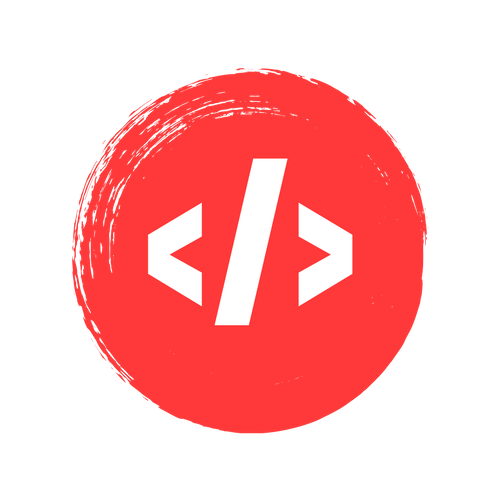Opinions expressed by Entrepreneur contributors are their own.
What’s the worst thing that can happen if you buy weak leads from a questionable source? New York City real estate broker Nathan Horne almost found out.
Horne’s employer, The Corcoran Group, focused on branding instead of strategic lead generation. So, when Horne called someone he thought was a hot lead, he got the surprise of his life. Instead of a potential buyer, the police detective who answered the phone made a veiled threat about having a gun and being willing to use it.
Fortunately, Horne received only a verbal scolding and not something more dangerous. It turns out there’s a whole underground world of companies that specialize in lead generation, but those in the broker business—like Horne—have discovered that these businesses not only provide poor leads, but also occasionally flirt with illegal activity (like lead dilution, acquiring leads by dubious means or, in Horne’s case, providing fake leads that can lead to irritated recipients).
En route, Horne learned a big lesson: If your company doesn’t have successful lead generation, you’re putting your business’s future at risk—not to mention leaving your team hesitant to pick up the phone and call an untested lead.
Move beyond your personal spider web
Why do so many companies fall into a trap that keeps them from focusing on their lead generation? Call it the spider web effect.
When founders begin their organizations, they work their own networks first. Eventually, they tap out these personal spiderwebs and neglect to move beyond them. Instead, they delve into everyday operations and forget to keep bringing new prospects in the door. And if someone brings up the notion of organized lead generation? A succinct “we aren’t ready for that yet” usually stops the conversation.
To outsiders, this may seem shocking. Yet it’s common, particularly among lifestyle businesses large enough to allow their owners to prosper just enough. Those types of organizations weren’t created to scale; they were created to provide an income for the entrepreneurial C-suite folks.
Is it any wonder that so many commercial establishments closed down after the founders retired?
You can get out of the “no lead gen” rut
Our own company started similarly 35 years ago. For 25 years, lead generation was a passing fancy. Customers came but weren’t wooed. And while we enjoyed growth in that time, little of it came through a solid lead generation strategy (because, to be frank, we didn’t have one).
Thus, a decade ago, we decided to align our lead generation and marketing tactics. And we’ve grown phenomenally ever since, like the 90 percent of other businesses that have made similar decisions, according to CSO Insights.
Of course, some companies ardently say they want to get bigger, but they’re not necessarily following a wise map, either. Far too many bring in outside salespeople to make cold calls. That’s not a lead-generation tactic; it’s a cold-calling one. Sometimes that works, sometimes it doesn’t, but it’s always a tough way to scale.
The best strategy? Hire amazing salespeople and supplement what they naturally do with a content-driven lead-generation protocol. Without this kind of commitment, even the most exciting organization with the highest potential can run the risk of not hitting revenue goals, frustrating the heck out of amazing sales professionals and not closing deals due to lack of appointments.
Stay ahead of the competition
Unless you like the idea of falling behind the competition, you owe it to your company to make lead generation a priority by developing a thorough content marketing campaign. Constant content creation and dissemination ensures you won’t be scrambling for prospective buyers.
The more consistent you are, the better your returns: Orbit Media says that nearly half of bloggers who put time and effort into blogging make money. HubSpot concurs, noting that busy blogs offering at least 16 posts every month can expect traffic to triple, as opposed to their barely there blogging counterparts.
Ready to begin? Here are the rules:
1. Go to your customers
Start at your heart by surveying your clients about what they want to know, what they read, how they think and where they hang out when they’re not buying your merchandise or services.
Their answers will help drive content. At the same time, ask your salespeople and customer service personnel what they’re constantly being asked. They’ll happily share everything they’ve heard, and you can turn their responses into content topics later. The more research you do up-front, the better your plan will be.
Although this should be an ongoing task, plan on about 30 days to get a head start. Evaluate the feedback to use the information innovatively. Ironically, that’s what SurveyMonkey did. It sent out surveys to users to make its brand more attractive. As a SurveyMonkey enthusiast, I’m pleased to see the company utilizing its own offerings to improve.
2. Devise your plan of attack
Open a Google Doc or grab a piece of paper. Then, clearly write down what you plan to do in terms of content creation. Just as you wouldn’t start a business without a proposal or route, don’t jump into speaking engagements, blogging, ebooks, webinars or any other content production without forethought.
What will your plan look like? That’s up to what you discover. Mine included a mission to produce only educational content, not promotional pieces. As the one spearheading everything, I worked during “off” hours on fulfillment to get traction. Now, our team is all on board because we’re able to track how effective our content is month over month.
3. Share your trade secrets
Don’t gasp at the thought of sharing your expertise. It’s not your grandmother’s famous cookie dough recipe, after all. If you don’t offer anything valuable through your content, you’re just sending out sales pitches. Instead of treating readers, viewers and listeners like droids, craft intriguing items that provide insider knowledge.
Through this approach, you’ll humanize your efforts. In the eyes of the public, you’ll be seen as a partner. This will lower readers’ defenses and promote honest engagement. In addition, you’ll set up your content creators to be thought leaders. For example, at Influence & Co., a content marketing agency we work with, CEO John Hall has made being honest his mantra with significant reputation-boosting and profit-generating results.
4. Create accountability for maximum results
Obviously, you’ll want to measure your success, to determine how well your lead generation is working. Why not start by developing a service-level agreement (SLA) between the sales and marketing departments? An SLA defines each team’s role in sharing and ensures important information won’t be lost in translation.
In addition, have key performance indicators in place. The KPIs can be tracked by spreadsheets and monitored routinely. At our company, we consistently investigate which content is bringing in the most leads. That’s an actionable approach and puts everyone on the same page.
The time is now
Wondering whether the time is right to strike on this type of lead gen venture? It is, hands down. As the old adage says, “A good plan today is better than a great plan tomorrow.” The faster you get a process in place, the faster you’ll see those golden returns.













